The following is an excerpt from Dissecting The Walking Dead: Slicing Into The Guts of Television’s Hottest Show, available in paperback and for Kindle.
Without George Romero, there is no The Walking Dead.
 His 1968 film, Night of the Living Dead, invented the modern zombie genre. Robert Kirkman himself has said on many occasions that his comic series and television show is essentially an extended take on Romero’s legendary film, borrowing all its core elements and reimagining them as an ongoing story rather than a single night of terror.
His 1968 film, Night of the Living Dead, invented the modern zombie genre. Robert Kirkman himself has said on many occasions that his comic series and television show is essentially an extended take on Romero’s legendary film, borrowing all its core elements and reimagining them as an ongoing story rather than a single night of terror.
In other words, if you want to understand where The Walking Dead comes from, you must understand Night of the Living Dead and the Romero mythos.
As I examined in a previous post, Romero didn’t create the zombie out of whole cloth. There were an array of influences that lead to Night of the Living Dead, and in fact that film refers to the creatures as ghouls, not zombies. Rather, Romero mixed together varied chunks of mythology and turned them into something that was unique in both horror and pop culture.
Born in the Bronx section of New York City, Romero spent the early 1960s producing short films and television commercials, including a short Mr. Roger’s Neighborhood segment. At the time, Hollywood standards were loosening and on-screen violence was becoming more explicit. In 1960, for example, Alfred Hitchcock shocked audiences with Psycho when he showed blood running into a shower drain. It was merely chocolate sauce filmed in black and white, but it disturbed audiences all the same.
Three years later, the envelope wasn’t just pushed, it was shredded to pieces with Blood Feast, a splatter film by Herschell Gordon Lewis that depicted a murderous caterer who hacked up women and served them as food. Blood Feast was a mind-blowing and controversial film that seemed to come out of nowhere. Variety called it “incredibly crude and unprofessional from start to finish.”
Unprofessional, maybe, but it revealed a desire among a niche audience for stuff that pushed the limits of “good taste.” A string of other blood-drenched films followed, including Lewis’s own Two Thousand Maniacs! (1964) and Color Me Blood Red (1965). There was also 1964’s The Flesh Eaters, which became a drive-through cult favorite thanks to its over-the-top gore, including tiny creatures eating a man from the inside out, his intestines pouring out like a fountain. It was critically panned, but audiences loved it.
The audience for this stuff was small, to be sure, but they also became fiercely loyal. They wanted their gore.
Seeing that there was some demand for films that pushed the bounds of what was then considered acceptable and wanting to capitalize on it – these splatter films tended to be made with a low budget, so they didn’t need to be smash successes in order to be profitable – Romero began to see dollar signs. He and his then business partners, John Russo and Russell Streiner, hooked up with Karl Hardman and Marilyn Eastman, who owned their own film firm, and created the production company Image Ten. They raised about $114,000 and began production on what was initially called Monster Flick. Their intention was simple: to make money.
Romero and his partners had no idea at the time, but the cynical little slasher flick they were making would become a landmark in film history and kickstart a zombie craze that today is bigger than ever.
When Romero began crafting the movie that would become Night of the Living Dead, though, he had no intention of creating a new take on zombies.
“To me back then, zombies were those voodoo guys who were given some sort of blowfish cocktail and became slaves. And they weren’t dead so I thought I was doing a brand new thing by raising the dead,” Romero said.
In fact, not only did he have no intention of creating a new take on zombies, he and his investors weren’t even all that interested in horror. They saw it as a business opportunity. “George and I happened to be watching some particularly poorly-made horror films on the NBC affiliate in Pittsburgh,” said Streiner. “And we said, ‘Look, some TV station paid money for that thing. If we can’t do something that’s at least equal to that, we’d better hang it up and stick to making TV commercials!’”
The concept they came up with was almost laughably basic: a meteor passes close to or strikes the Earth, leaving behind debris that we are to infer is responsible for causing the dead to come back to life. The deceased rise from their graves and proceed to devour people. A few survivors hold out for a little while before being eaten. The final survivor of the attack ends up being killed by a monster worse than ghouls: other human beings.
The movie was almost called Night of the Flesh Eaters, but was changed at the last minute to Night of the Living Dead to avoid confusion with The Flesh Eaters. Unfortunately, when the producers created a new title card for the movie, they forgot to put a copyright declaration on it. This proved to be a costly decision. Under the copyright laws of the time, filmmakers had to declare in writing on the title card their ownership of the movie. Failure to include the copyright notice on the new title card meant Night of the Living Dead immediately went into the public domain. That’s why there are so many poor quality VHS, DVD and Blu-Ray releases of it – because anyone, even you, can release your own copy of the movie.
Regardless of their error, their cynical little cash-in ended up making a big impact.
The finished product was a stark, brutal film that looked like nothing else out of Hollywood. It wasn’t filmed on a set; it was filmed in a real farmhouse. The actors were unknowns, with all the awkwardness and rawness that implies. The story it told is now a familiar one, but at the time it was shocking: a small group of survivors come together in the midst of a horrific outbreak, inner conflict tears them apart, and every character you’ve grown to like dies in the end.
That just isn’t how films were done.
Early reaction to the movie was as bleak as the movie itself. It was mistakenly shown to younger viewers during weekend matinees, which were typically set aside for all-ages viewing. It was billed as a horror movie, sure, but at the time horror was a much different beast than it is today. Hammer Horror films might give younger viewers some thrills and chills, but they weren’t going to traumatize them. Horror films of the time were charmingly fearful. This, on the other hand, was genuinely horrific.
As Roger Ebert famously noted, Night of the Living Dead unexpectedly sank people into a world they were not prepared for.
The kids in the audience were stunned. There was almost complete silence. The movie had stopped being delightfully scary about halfway through, and had become unexpectedly terrifying. There was a little girl across the aisle from me, maybe nine years old, who was sitting very still in her seat and crying.
I don’t think the younger kids really knew what hit them. They were used to going to movies, sure, and they’d seen some horror movies before, sure, but this was something else. This was ghouls eating people up — and you could actually see what they were eating. This was little girls killing their mothers … I felt real terror in that neighborhood theater last Saturday afternoon. I saw kids who had no resources they could draw upon to protect themselves from the dread and fear they felt. (4)
Indeed, Night of the Living Dead broke new ground with its stark, bleak atmosphere. The barren landscapes and stripped down sets made the world appear on the brink of an endless night. The look and feel of the film changed horror forever – but not on purpose.
“That was accidental,” Hardman and Eastman said. “We knew that we could not raise enough money to shoot a film on a par with the classic horror films with which we had all grown up. The best that we could do was to place our cast in a remote spot and then bring the horror to be visited on them in that spot. We had no idea that we would be creating a mutation of the horror film genre.”
The film wasn’t necessarily destined to be a game changer, either. It faltered at first. It was too different, too stark, too raw. No one had any idea how to market it. For a time it teetered on the brink of failure.
Regardless of the filmmakers’ intent, though, once European audiences got their hands on the movie, sentiment began to shift. Britain’s Sight and Sound magazine and France’s Cahiers du Cinema both lauded it as a groundbreaking film. With its European bona fides now in place, it began to be seen less as an affront to decency and more as a monumental shift in what films could and could not do.
It wasn’t all about the blood and gore, either. According to Steiner, who also played Johnny in the film, the movie has resonated all these years because it wasn’t just focused on monsters and gore. “Night of the Living Dead, as odd as it may seem, there’s a lot of human drama that went into it,” Streiner told this author. “One of the things that made it successful is that it focused on telling a story.”
Telling a story, and more importantly having something to say with that story, would become a hallmark of Romero’s Dead films. The first film had unintentional commentary on race relations in America. Later films, though, would intentionally use their grim scenarios as a platform from which to comment on American society.
A decade after Night, he followed it up with 1978’s Dawn of the Dead, considered by many to be second only to Night as the most important film in the genre (and by many others as the best of the genre overall). Dawn repeats the formula of the first, but this time with sly satire and social commentary. The setting in which the survivors of the zombie apocalypse take refuge is a sprawling shopping mall. Naturally, the mall is infested with the undead, forcing the survivors to bash a lot of brains in in order to turn the refuge into a (short-lived) home. This time the zombies serve as more than just a flesh-eating menace for our heroes to avoid. >
“I wanted to do a satire about consumerism; a friend of ours owned that shopping mall, and he was fool enough to let us come in and bust it up,” Romero said.
Dawn of the Dead actually has something to say about consumerism
Dawn was a surprising critical success, hailed as one of the greatest horror films of all time and influencing a glut of imitators in the decade that followed. Romero himself would give us Day of the Dead (1985) next, which was a fierce takedown of the American military industrial complex and anti-intellectualism, and then 2005’s social class commentary, Land of the Dead.
The hallmark of Romero’s movies was a mix of insane gore – the famous scene in Day in which Rhodes is torn apart is still one of the most horrific bits of splatter in a zombie film – while also using zombies to comment on society, an approach Kirkman has also used in The Walking Dead, albeit to a lesser extent. He made a handful of films after Land that have been widely panned, but he’s still considered the grandfather of the genre.
Max Brooks, author of The Zombie Survival Guide and the smash hit World War Z, said Romero’s take on zombies allows storytellers to do things they may not necessarily be able todo with other corners of the horror world.
“Zombies are a mirror for our own weaknesses. When zombies are slow, stupid and easy to kill, how do they win? Their inherent weakness exposes our stupidity, our greed, our panic. It’s like Hurricane Katrina. It was just water. But the story of Hurricane Katrina is a story of unbelievable human mistakes, and that’s what an interesting zombie story is.”
Romero may be the biggest name in modern zombies, but he certainly wasn’t the only one who helped lay the groundwork for The Walking Dead. Between 1980 and 1989, well over sixty zombie or zombie-esque films were released. Some of them, such as Sam Raimi’s Evil Dead series and 1985’s black comedy The Return of the Living Dead, became cult hits in their own right. Others, like Zombie Brigade (1986) and Oasis of the Zombies (1982), were cheap international knockoffs that aimed to capitalize on the small but fervent fandom that had amassed around the genre.
A wealth of zombie movies were made in the 1990s, too, including a remake of Night of the Living Dead; Army of Darkness, the third installment of Sam Raimi’s Evil Dead series; and Peter Jackson’s cult classic splatter comedy Braindead, known as Dead Alive in North America.
Not many made it to the mainstream, though. By the time Nirvana, flannel shirts and grunge hit the pop culture scene, zombies were drifting out of fashion.
That all changed in 2002, when 28 Days Later and Resident Evil both hit the theaters. The latter was based on a popular video game series, while the former riffed on Romero’s penchant for stark storytelling, but presented it in a slick, modern package that made audiences sit up and pay attention. Two years later, and clearly influenced by 28 Days Later, a remake of Romero’s Dawn of the Dead was released, along with the next Resident Evil movie.
It was arguably Shaun of the Dead, however, a zombie comedy released in 2004, that solidified the undead’s reemergence in the mainstream, this time for good. Directed by Edgar Wright and starring Simon Pegg and Nick Frost, Shaun of the Dead had loads of fun with the genre while also treating it with a level of loving respect parody movies rarely muster. It wasn’t a huge financial success due to its limited release, but it was and remains a critical darling, featuring dynamic direction, smart laughs, and plenty of zombie mayhem.
This renewal of zombie love at the dawn of the new millennium helped lay the groundwork for The Walking Dead’s rise to popularity. Right around this time, Kirkman’s comic, launched in 2003 and featuring an opening remarkably (but unintentionally) similar to 28 Days Later, was starting to find its audience. Zombies were coming into vogue again, and when he decided to create The Walking Dead he had a vast well of influences from which to draw – and draw from them he did. Even its most ardent fans recognize that it’s not a truly original creation. Rather, it’s a logical extension of what had come before, an attempt to turn a niche genre into an epic ongoing saga that appeals to more than just fans of flesh-eating undead.
None of the above should be seen as an insult or as a way to minimize the boldest of Kirkman’s creation. Rather, it’s to put things in context. Kirkman himself will be the first to tell you that The Walking Dead is not reinventing the genre, nor does it intend to. Instead, one of his goals is to bring Romero-esque zombie lore into the mainstream in the same way vampire lore and werewolf lore is well known even by people who are not steeped in those myths.
“[The Walking Dead] is kind of my effort to canonize zombie lore. Vampires have a set bunch of rules, werewolves have a set bunch of rules—but a lot of time, when people try to do something with zombies, they try to reinvent the wheel … It’s confusing, and they have to explain it all. So I decided to start with the base, core—what I consider to be the ideal, perfect zombie—and go from there.”
It’s hard to argue that he did not succeed. These days, even people who aren’t generally interested in the genre nonetheless understand the “rules” that drive it. That’s thanks to Kirkman, as well as to books like the Max Brooks bestseller World War Z, not to mention the countless video games that have riffed on the now classic zombie mythos created by George Romero.
For what it’s worth, the originator of the genre doesn’t care much for what’s being done with it on The Walking Dead. “Basically it’s just a soap opera with a zombie occasionally,” he said. “I always used the zombie as a character for satire or a political criticism and I find that missing in what’s happening now.”
But Walking Dead fans aren’t likely to care that Romero is a little grumpy at no longer being seen as king of the zombie. Not as long as the show keeps delivering the human drama that it has made its hallmark.
Before getting into what makes the show so appealing, though, let’s explore how it got made in the first place and some of the ups and downs that have happened behind the scenes.
Because in some ways, the soap opera of how the show got made is as dramatic as the soap opera we see on screen. Keep reading here…
———-


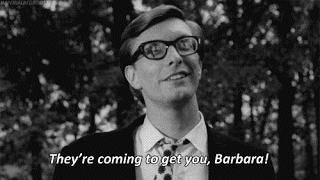
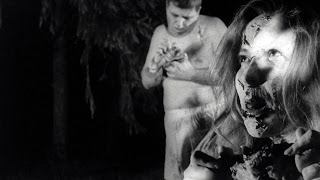
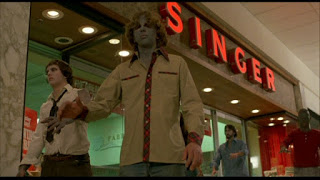

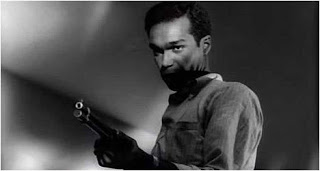



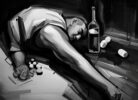



Pingback: Zombie Apocalypse Scenarios Don’t Make Sense To Me – ERIC SAN JUAN
Pingback: Night of the Living Dead! – ERIC SAN JUAN
Pingback: White Zombie (1932) – ERIC SAN JUAN
Kris- Such a great message about fear. Thanks!